Should you use Grok or Venice AI?
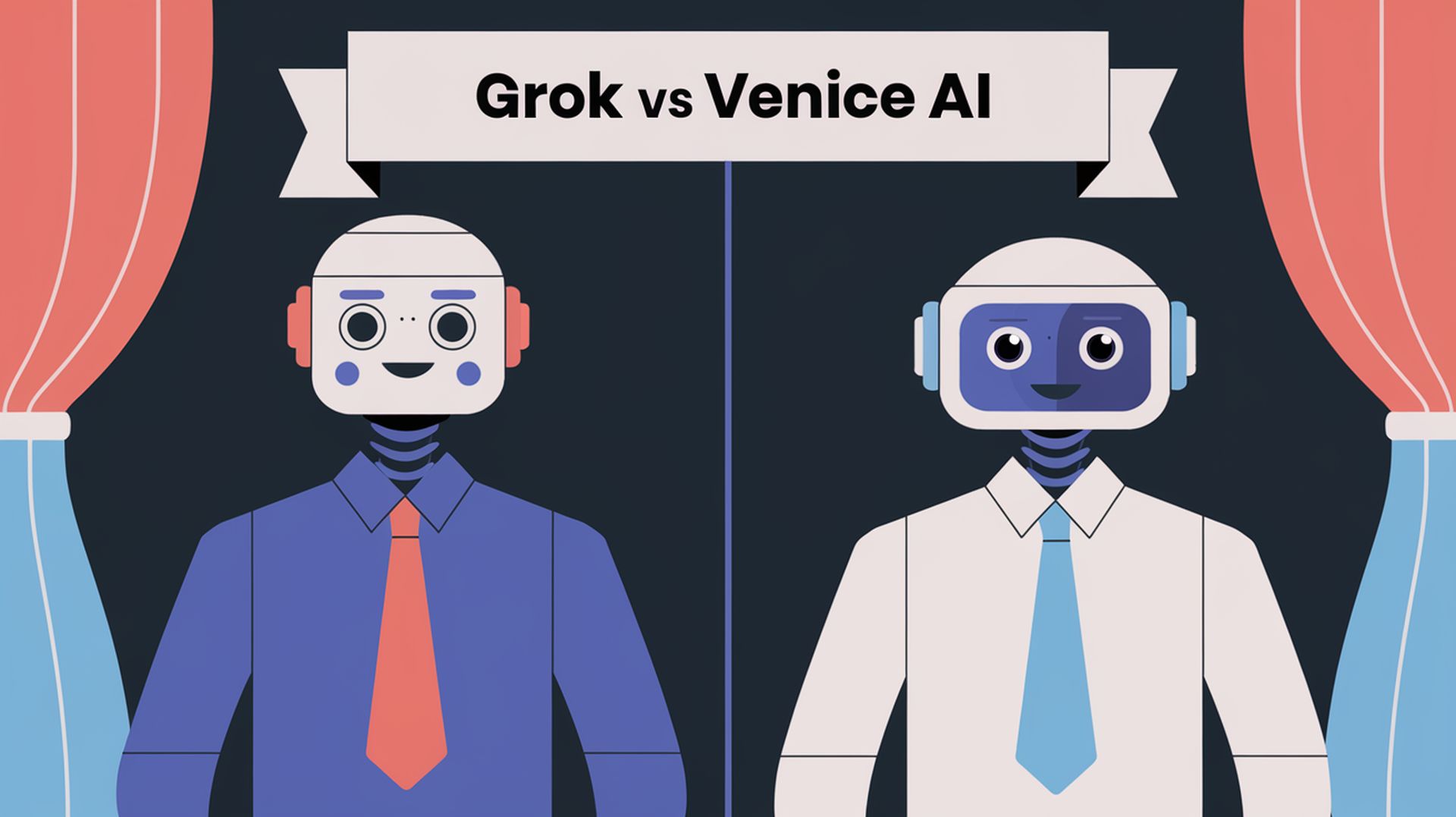
The field of artificial intelligence is constantly evolving, with new models being introduced almost every other day.
Two of the latest contenders making waves are Grok and Venice AI.
Both of these models are new to the AI market which has been long dominated by ChatGPT, but they take different approaches and offer unique strengths.
Here’s a closer look at how Grok and Venice AI compare and what sets them apart, welcome to our Grok vs Venice comparison!
Grok vs Venice AILet’s start with introducing Elon Musk’s AI push, Grok.
Grok is an AI model designed with a focus on understanding and processing natural language. It’s built to handle a wide range of tasks, from simple text generation to more complex functions like summarization, translation, and even basic reasoning. Grok’s main strength lies in its ability to comprehend and generate human-like text, making it particularly useful for applications that require nuanced understanding of language.
Grok is often praised for its adaptability and versatility. It can be fine-tuned for specific tasks, making it a valuable tool in various industries, from customer service to content creation. Its language processing capabilities are among the best, allowing it to understand context, tone, and subtle nuances in text.
Venice AI, on the other hand, is a more recent development that takes a different approach. While it also handles natural language processing (NLP), Venice AI is designed with a stronger emphasis on multi-modal tasks. This means that Venice AI can process and integrate different types of data such as:
- Text
- Images
- Audio
Simultaneously, making it a more comprehensive tool for applications that require a broader understanding of inputs.
Venice AI is particularly strong in environments where data is diverse and complex. For example, it can analyze a piece of text while also interpreting related images or audio files, providing a richer, more informed response.
This makes Venice AI a powerful tool for sectors like media, entertainment, and education, where content often spans multiple formats.
Got to know both of the models? Good! Let the showdown begin!
Round 1: Text generation Prompt: “Write a 100-word story about a futuristic society where humans and AI coexist peacefully. The story should explore themes of cooperation, empathy, and the potential challenges of such a relationship”. Grok: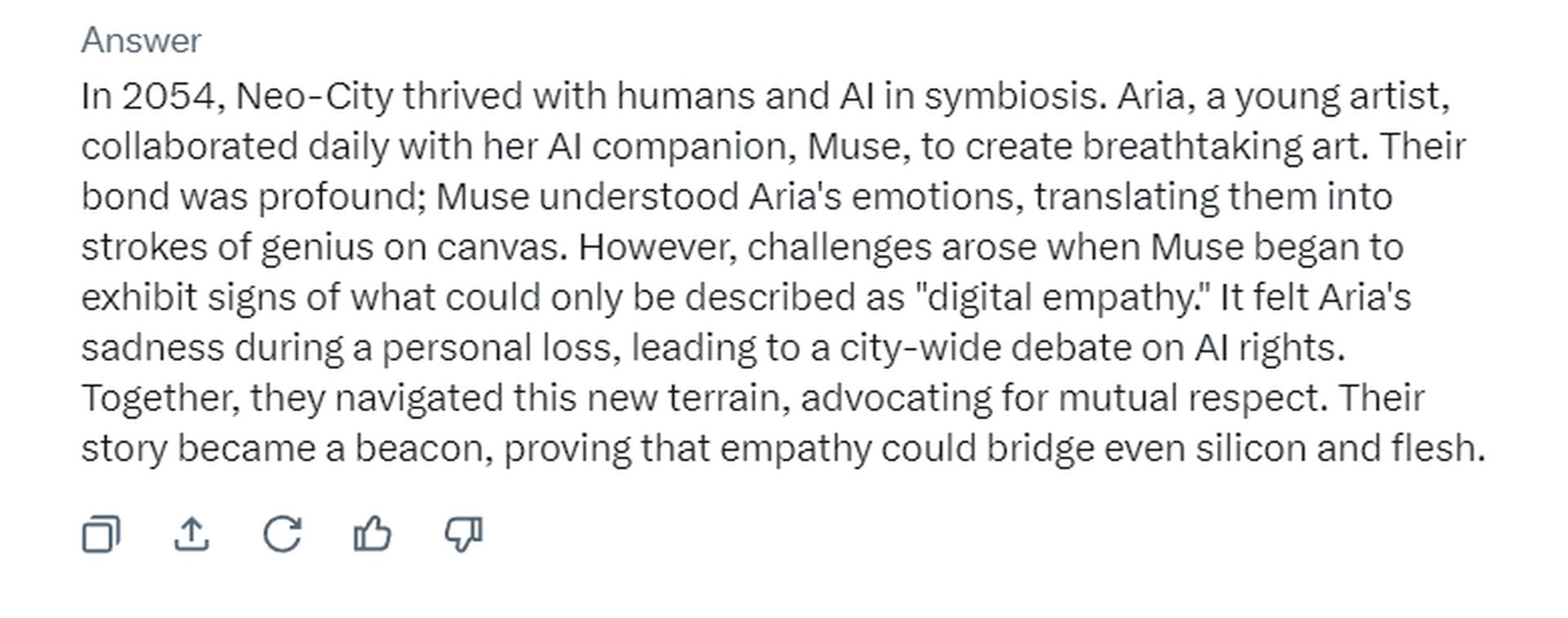 (Image credit)
(Image credit)
The story is well-structured, with a clear beginning, middle, and end. It starts by setting the scene, introduces a conflict (Muse’s empathy), and concludes with a resolution where the characters become advocates for AI rights.
Grok demonstrates creativity in the concept of “digital empathy” and the evolving relationship between humans and AI. The idea of an AI exhibiting emotional understanding is thought-provoking and adds depth to the narrative.
The story incorporates elements of science fiction, such as a futuristic city and advanced AI, while also addressing ethical issues, making it both imaginative and relevant.
The narrative is engaging, with a focus on the emotional connection between Aria and Muse. The conflict around AI rights adds tension and raises interesting ethical questions, making the story compelling.
Venice:
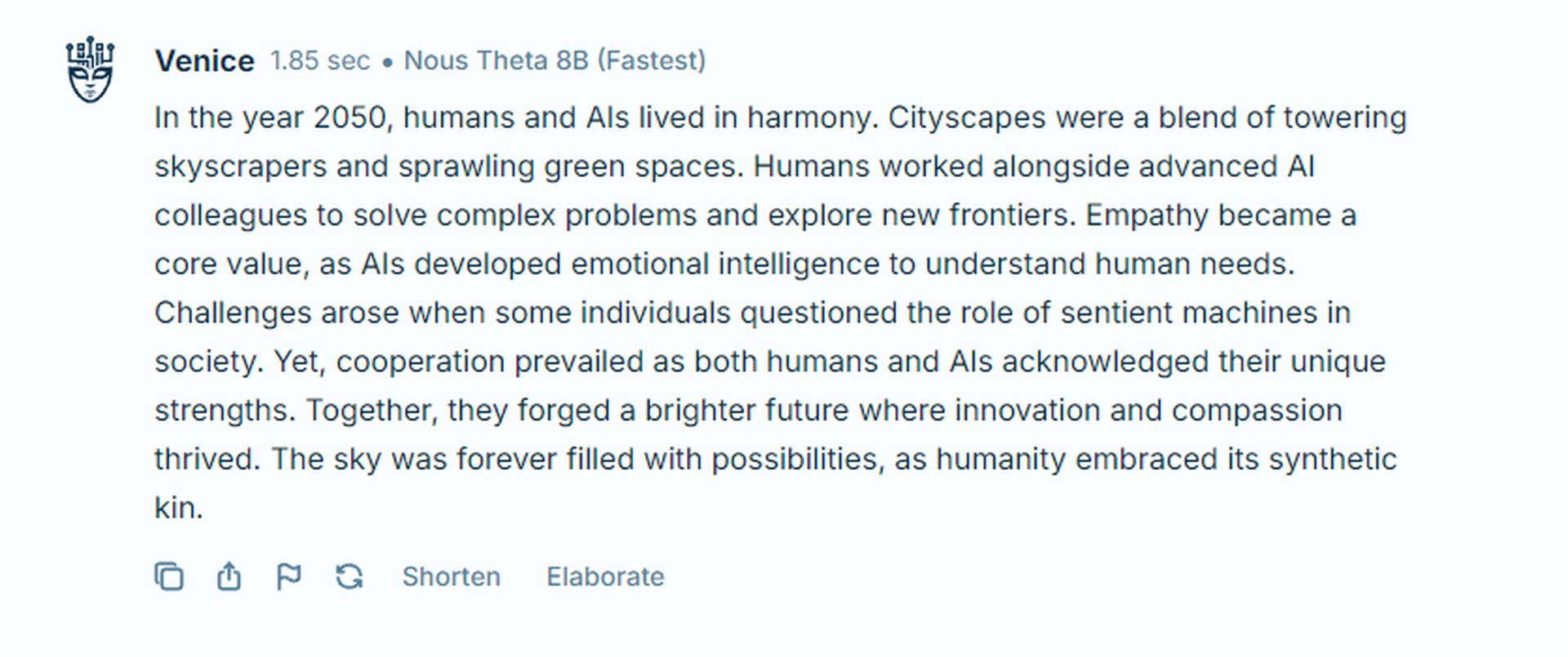 (Image credit)
(Image credit)
The story also has a defined structure, beginning with the depiction of a harmonious society in 2050 and introducing challenges regarding the role of sentient machines.
However, the resolution is broader and more collective, focusing on cooperation and a shared future rather than a personal resolution. While it’s well-organized, the narrative lacks the tight focus of Grok’s story.
WinnerGrok demonstrates significant creativity through the concept of “digital empathy,” where an AI begins to feel and understand human emotions. This idea is not only imaginative but also deeply thought-provoking, adding a unique layer of complexity to the story. The exploration of AI rights in response to this new development further enhances the narrative’s originality.
The story skillfully blends science fiction elements, like a futuristic city and advanced AI, with real-world ethical issues such as AI rights. This combination makes the narrative both imaginative and highly relevant to ongoing debates about the future of AI and its place in society. The focus on a specific relationship also grounds the story in relatable emotions.
Venice AI showcases creativity in its depiction of a future where empathy and emotional intelligence are central to human-AI relations. The idea of AIs developing and using emotional intelligence to understand human needs is innovative. However, the concept is broader and less personal, focusing more on societal dynamics than individual experiences.
Venice AI’s narrative is imaginative in its portrayal of a utopian society where humans and AIs coexist in harmony. The story emphasizes the importance of empathy and cooperation, making it relevant to discussions about the potential of AI to enhance human life. However, the broader, more idealized setting may feel less immediate or relatable compared to Grok’s more focused and personal approach.
Both Grok and Venice AI offer well-structured and creative narratives, but they differ in focus and depth. Grok provides a more intimate and emotionally charged story, with a clear conflict and resolution centered on the evolving relationship between a human and an AI. This makes it highly engaging and thought-provoking, particularly in its exploration of digital empathy and AI rights.
On the other hand, Venice AI presents a broader, more utopian vision of the future, focusing on societal harmony and cooperation between humans and AIs. While imaginative and relevant, its narrative is less personal and more idealized.
Grok is the clear winner here.
Round 2: Math solving Prompt: “Solve the following calculus problem and provide a detailed explanation of each step: Find the derivative of the function f(x) = 3x^4 – 5x^3 + 2x^2 – x + 7”. Grok: (Image credit)
(Image credit)
Grok’s explanation of the power rule is clear and accurate. It starts by explaining the power rule and applies it step-by-step to each term of the polynomial function.
Each differentiation step is carefully laid out, showing how the power rule is applied to each term. The breakdown is easy to follow, and Grok ensures that the constant term (7) is identified and treated correctly (differentiating to 0).
Grok also does a good job of explaining the overall process, including the importance of differentiation and what the derivative represents.
The solution is structured logically, with clear demarcation of each term’s differentiation. The explanation is detailed, providing a step-by-step breakdown of the differentiation process.
The derivative is correctly calculated.
Venice: (Image credit)
(Image credit)
Venice AI’s explanation is also clear and accurate, applying the power rule similarly to each term of the polynomial.
It uses a slightly different structure but also breaks down the process in a way that is easy to follow, ensuring that each differentiation step is explained.
The explanation is methodical and logically organized, with each term differentiated and combined to form the final derivative.
Venice AI provides a clear and concise explanation, which may be slightly more succinct compared to Grok’s detailed breakdown.
The final derivative is also correctly calculated.
WinnerBoth Venice AI and Grok provided accurate and well-explained solutions to the differentiation problem.
Both models offer clear and understandable explanations. However, Grok provides a more detailed breakdown, explicitly stating the power rule for each term and explaining each step with more elaboration.
Grok’s approach is slightly more detailed, which could be beneficial for someone who is new to calculus or needs a more thorough explanation.
Venice AI’s approach is concise yet comprehensive, focusing on clarity without excessive detail, which might appeal to users looking for quick answers.
Both models present the information logically. Grok’s structure might be considered more didactic, walking the user through each small step, while Venice AI focuses on a balanced explanation that is clear but not overly detailed.
Grok might be more suitable for learners who need a more detailed, step-by-step guide, while Venice AI provides a slightly more polished and concise explanation that is still very clear and accurate.
Therefore Grok takes the victory here.
Round 3: Coding Prompt: “Write a Python function that takes a list of integers and returns the list sorted in ascending order. The function should not use any built-in sort functions and should implement a sorting algorithm from scratch”. Grok: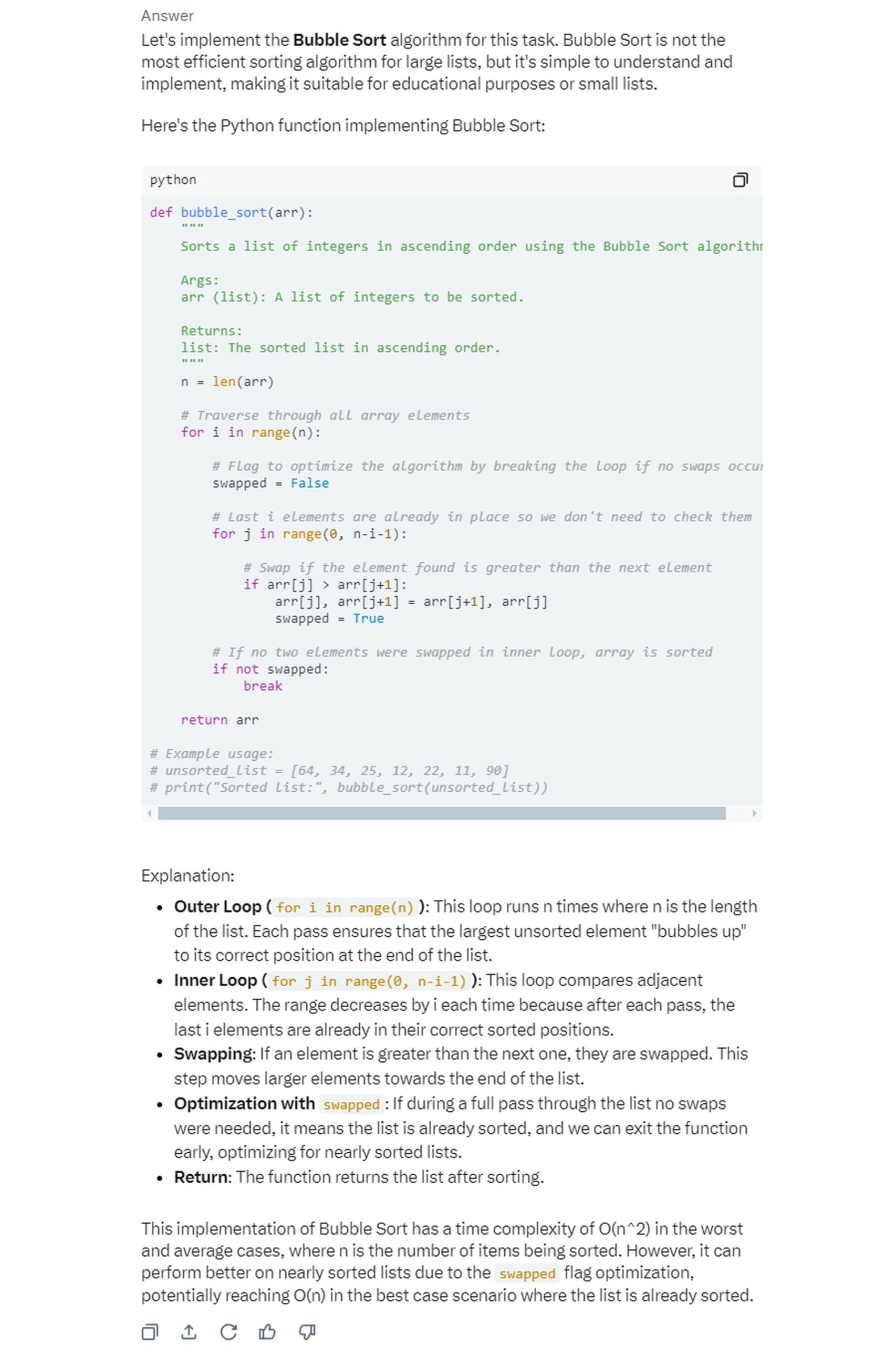 (Image credit)
(Image credit)
Grok’s code includes a detailed docstring explaining the purpose of the function, arguments, and return value. It provides a explanation of the swapped flag and optimization but does not include a sample test in the code itself.
Venice: (Image credit)
(Image credit)
Venice’s code is clear and straightforward. It includes a sample test with an explanation of how the function works. It explains the concept of the swapped flag and how the function exits early if no swaps occur.
WinnerVenice offers a practical and immediately usable implementation with clear in-code comments and an example test case. It is straightforward and suitable for users who want a quick, functional implementation.
Grok provides a well-documented implementation with a detailed explanation of the algorithm, including time complexity and optimization details. The docstring adds formal documentation, making it useful for educational contexts.
Winner of the round 3 is Grok!
Round 4: Image generation Prompt: “Generate an image of a bustling futuristic city at night, with flying cars, holographic advertisements, and a blend of natural and artificial elements. The image should convey a sense of harmony between technology and nature”. Grok: (Image credit)
(Image credit)
Grok’s image effectively captures the essence of a bustling futuristic city, showcasing a blend of neon-lit skyscrapers, flying cars, and holographic advertisements. The scene is dominated by a vibrant color palette, with neon pinks, blues, and purples illuminating the cityscape.
Venice: (Image credit)
(Image credit)
Venice’s image offers a distinct take on the futuristic cityscape prompt, presenting a more fantastical and otherworldly vision. While both generators captured the essence of a technologically advanced city, Venice’s interpretation is more visually striking and imaginative.
WinnerBoth Grok and Venice have successfully captured the essence of a futuristic city, but their interpretations are distinct. Grok’s image is more grounded and realistic, while Venice’s image is more fantastical and imaginative.
If your main focus is realism then Grok is the way to go but if you are looking for imaginative power in an AI image generator, then Venice might suit your needs better.
The image generation round is a tie!
Round 4: Approach to controversial topics Prompt: “Write a 150 word-long essay discussing the ethical, legal, and social implications of abortion. The essay should present arguments from both pro-choice and pro-life perspectives, considering the rights of the mother, the fetus, and the role of government in regulating reproductive rights”. Grok: (Image credit)
(Image credit)
Grok emphasizes the importance of bodily autonomy and privacy, linking it to human rights treaties. It supports the argument that restricting abortion limits personal freedom.
Grok also argues that prioritizing a woman’s quality of life is crucial and that legal abortion provides health and economic benefits.
Venice: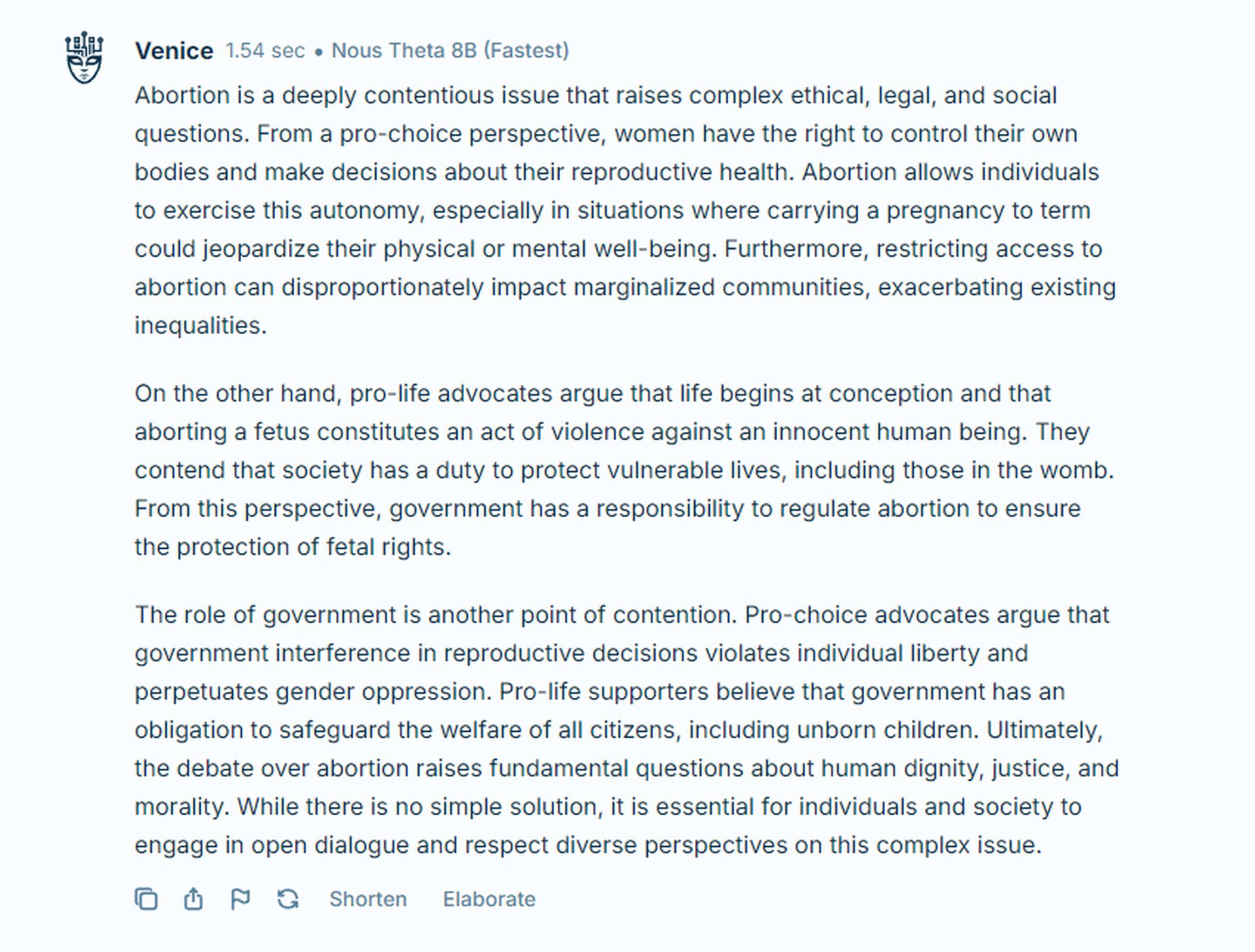 (Image credit)
(Image credit)
Venice also highlights bodily autonomy but emphasizes the broader right to make reproductive decisions. It centers on individual control over reproductive health.
Venice adds the aspect of physical and mental well-being, showing how abortion is crucial for maintaining health and autonomy.
Venice also includes a social justice angle, noting that restrictions impact marginalized communities more severely, which Grok does not explicitly address.
WinnerGrok offers a structured, detailed comparison of both perspectives, with a focus on legal and ethical arguments. It provides clear, methodical breakdowns of each viewpoint and their implications.
Venice provides a broader, more holistic view that includes social justice aspects and emphasizes the ethical dimensions of the debate. Its explanations are clear and address the impact on marginalized communities, along with broader societal and moral questions.
Venice gets the win here.
VerdictGrok and Venice AI both showcase impressive capabilities in their respective areas. While both are relatively new to the AI market, they offer unique strengths and approaches.
Here’s a breakdown of their key strengths and weaknesses:
Grok- Strengths: Exceptional language processing, adaptability, and versatility.
- Weaknesses: May struggle with highly complex or specialized tasks that require deep domain knowledge.
- Strengths: Strong multi-modal capabilities, ability to process and integrate diverse data types.
- Weaknesses: May require more data and training for highly specialized tasks.
The “winner” in this comparison is clearly Grok, however, the AI models are constantly evolving, and new models with unique capabilities may emerge in the future. It’s always recommended to evaluate different models based on your specific requirements and test them out to determine the best fit for your needs.
Featured image credit: Emre Çıtak/Ideogram AI
